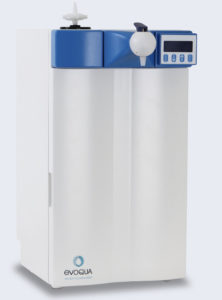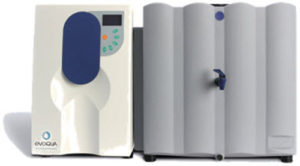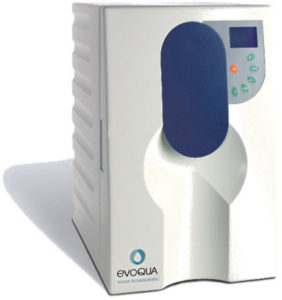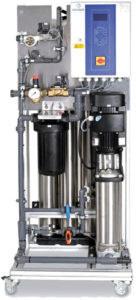Laboratory Water
Puretech offers world leading solutions for laboratory water systems
Working with Evoqua, global leaders improving water quality, Puretech offers a range of products to meet laboratory water requirements.
We are able to offer a range of solutions for all laboratory water applications, including:
Type 2
Small bench mounted units to large water generation and storage systems to cover flow rates from 10l/hr to 5,000l/hr.
Type 2 Pure Water is an essential part of creating chemical reagents, microbiological buffers and media that are consistently pure. It is also an excellent source of water for glassware washing, and as feed water for laboratory equipment such as autoclaves, laboratory dishwashers, and water baths. It is also a recommended source of pretreated water for your Type 1 ultra pure systems.
Type 2 (pure) water or pure lab water is used for a wide range of applications:
- PCR
- IC
- Pathology
- Cytology + histology work
- Buffer preparation
- Photometry and spectrophotometry
- Media preparation
- Electrophoreseses
- General Chemistry
- Feed for laboratory ultra-pure water systems
- Final Rinse of laboratory washing machines
How does reverse osmosis work?
A solution with a high salt concentration is separated by a semi permeable membrane from a solution with a low salt concentration. In normal osmosis, the water from the side with less salt will begin permeating the membrane into the more concentrated solution. In reverse osmosis, pressure is supplied that exceeds the osmotic pressure of the higher concentrated solution to force water in the reverse direction. Clean water starts to permeate through the membrane. This water contains approximately 98% less salt than the inlet water. This technology will also remove > 99 % of particles and bacteria.
The production rate of an RO system depends on the water temperature. Our specifications are given at a water temperature of 15°C. Each °C of temperature variation creates a water production shift of 3 %! Most manufacturers use 25°C to rate their performance, however, with our systems, you can be assured that your water production is in the right range even if the temperature falls below 25°C.
ISO 3696 water specifications for Type 2 (pure) water
| Resistivity (megohm-cm compensated to 25°C) | 1.0 |
| TOC (ppb) | 80 |
| Absorbance at 254 nm/cm optical path (A.U.) | < 0.01 |
| Silica (mg/l) | < 0.02 |
| Dry residue after evaporating on heating at 110°C | < 1.0 |
Type 2 Pure Water Systems:
LaboStar® RO DI System
 Connection to municipal drinking water supply
Connection to municipal drinking water supply- 7 liter built-in storage tank
- Pure water circulation right into the dispenser head
- Easy to dispense water using the practical POU dispenser
- 0.2 µm sterile filter with or without endotoxins retention as
option available - Whisper operation mode
- Rapid and simple disinfection
- Conductivity monitoring of RO and DI water
- Easy module exchange via quick-release connections
Oasys RO EDI and Protegra CS Systems
Credentials
AstraZeneca Research and Development Centre
Puretech engineered and installed a purified water to system at the AstraZeneca Research and Development Centre, Cambridge , taking raw water from the mains through pre-treatment and purification using OASYS units. The purified water, which is stored in a 5000-litre tank, is distributed via a stainless-steel ring main to user points in the laboratories.



